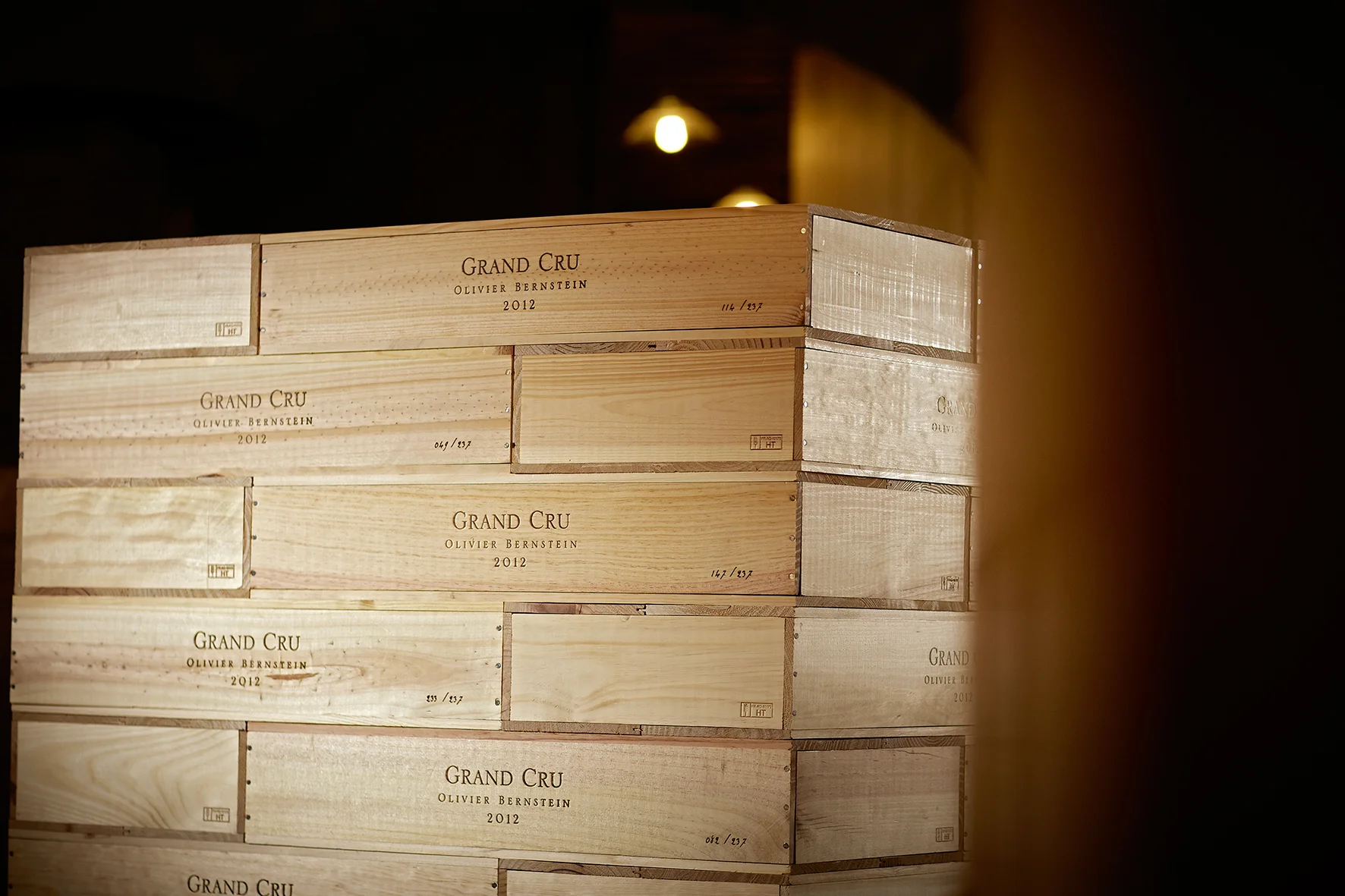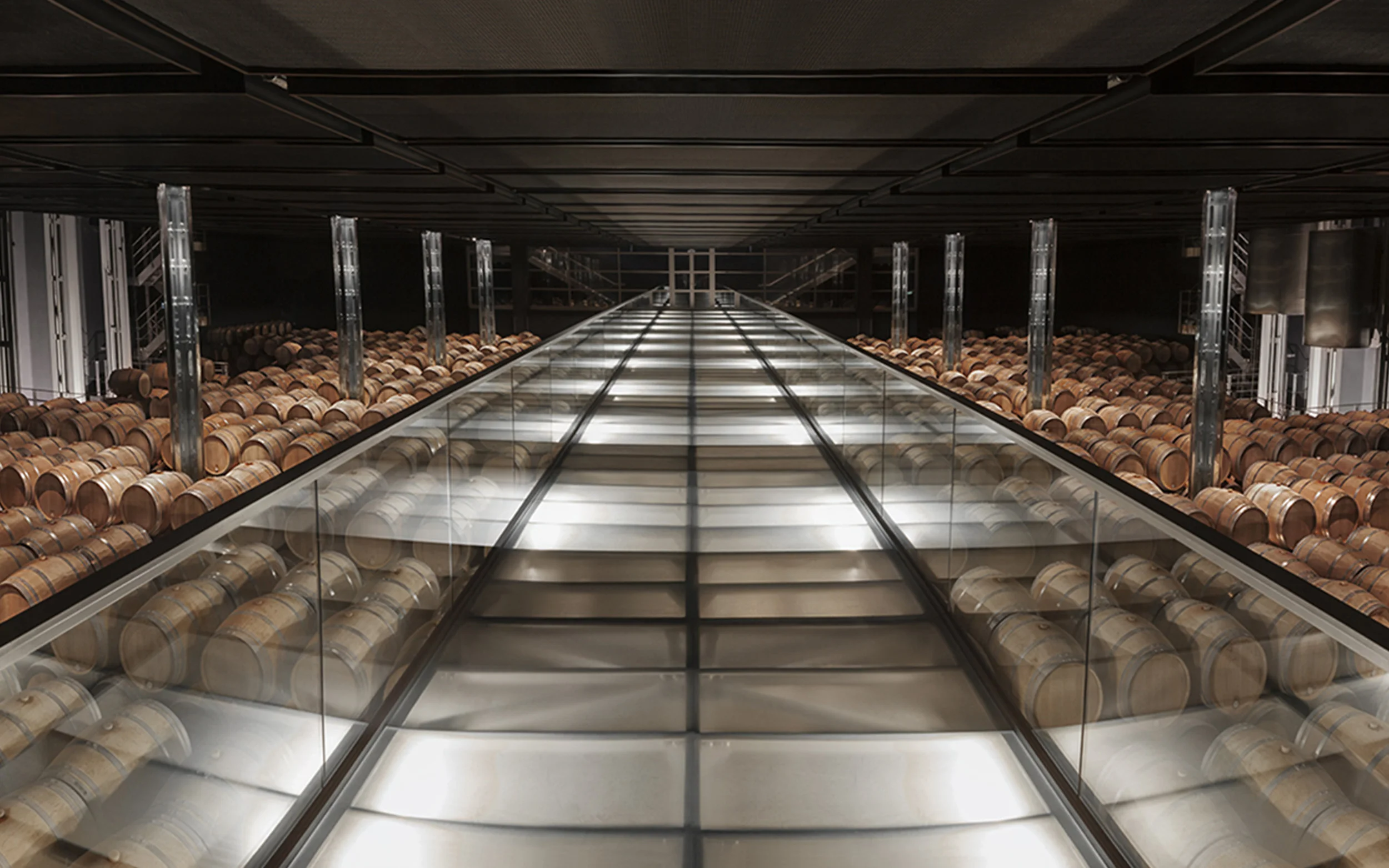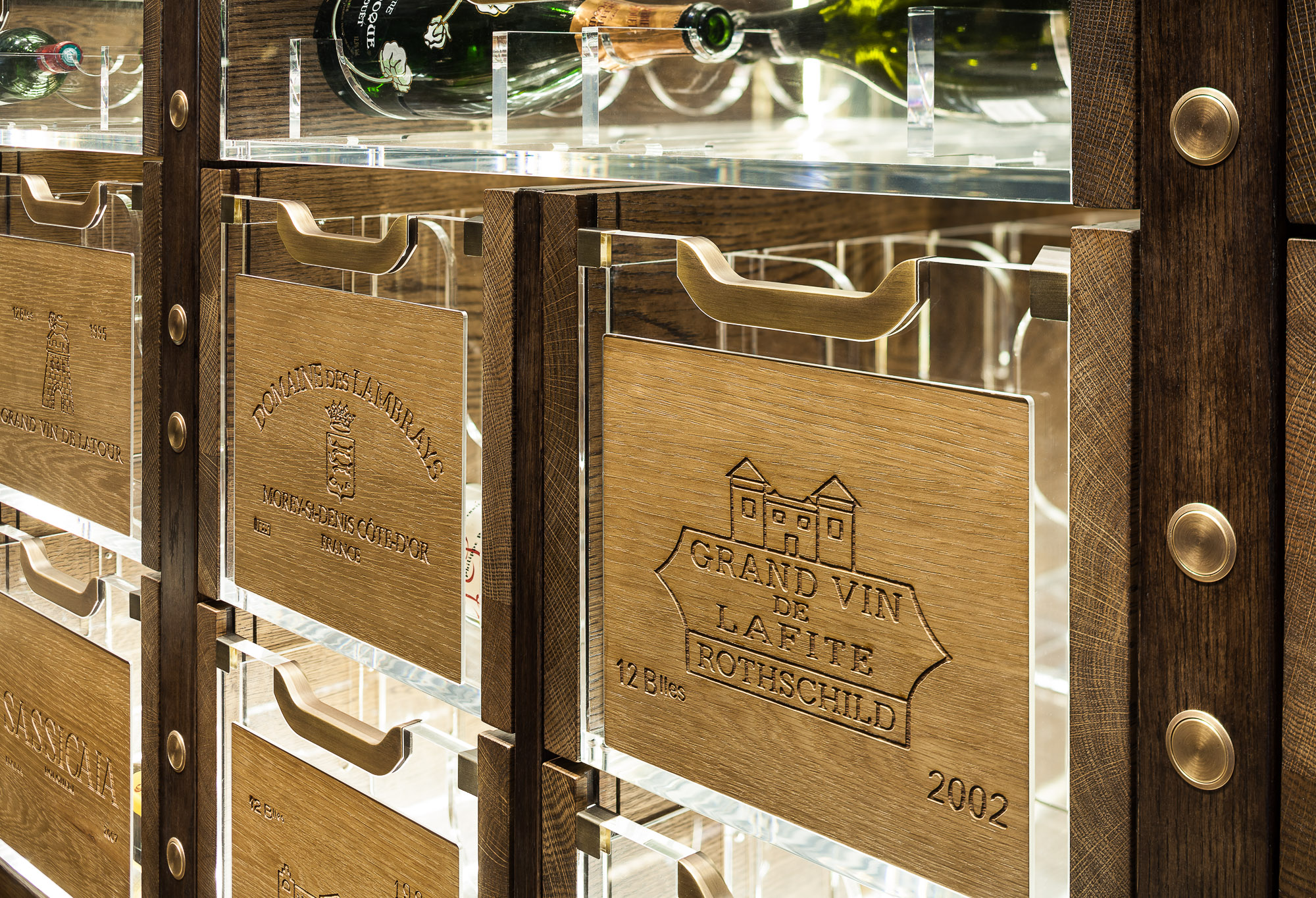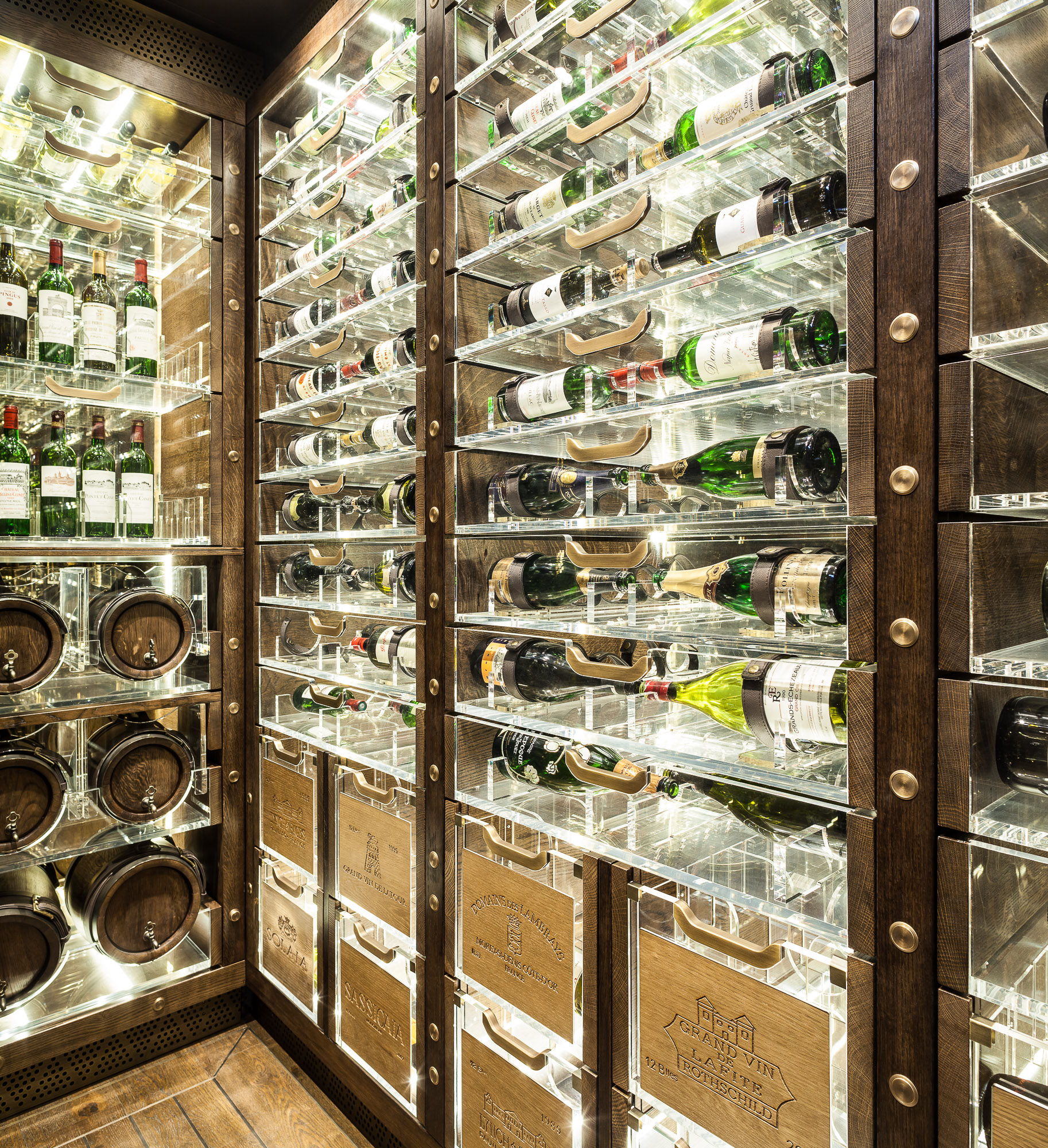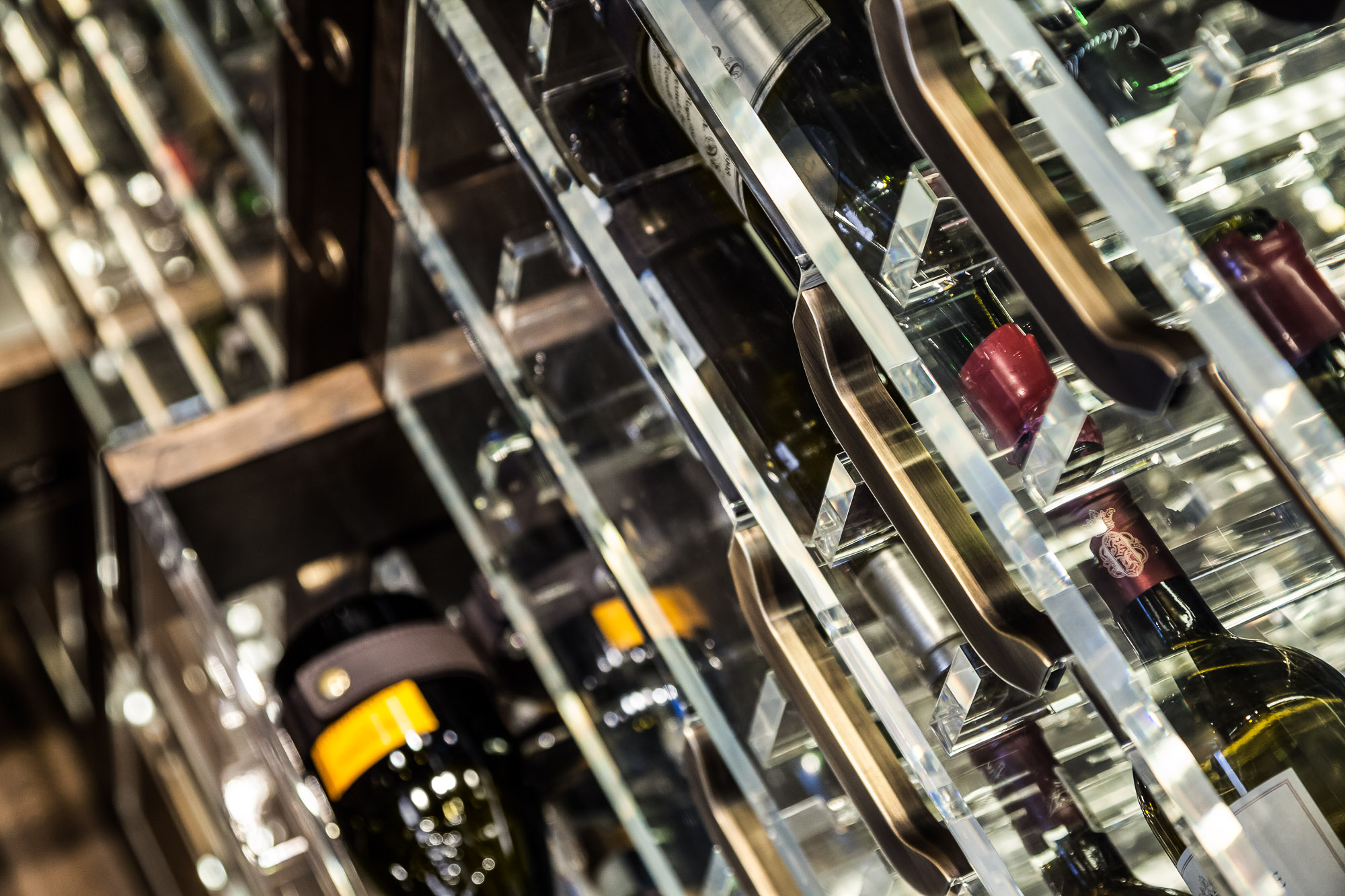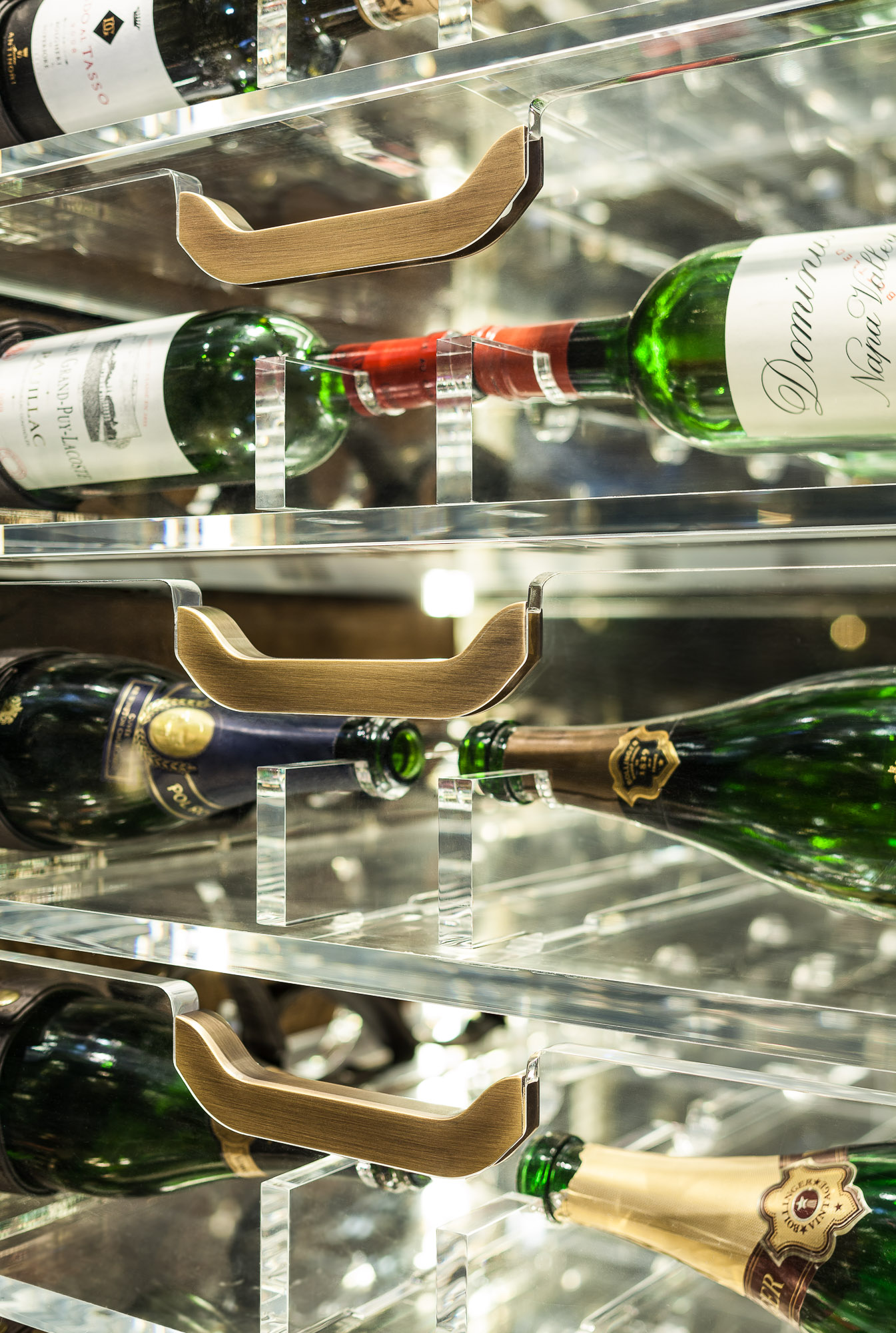Mercurey’s large wine production can sometimes produce disappointingly rustic reds and rather non-descript whites. Bruno Lorenzon’s wines are as far from this profile as possible. The wines are expensive, true enough, but once tasted one can forget about both the appellation and the price! These meticulously crafted wines offer, quite simply, some of the most satisfying and delicious Burgundy to be found. We currently list the domaine’s red 2014s which need a few more years in bottle to round out to their full potential, but the Lorenzon experience can be enjoyed now with his white premier cru Clos des Barraults 2014, a remarkably fine, complex Chardonnay with focus and drive and elegance..


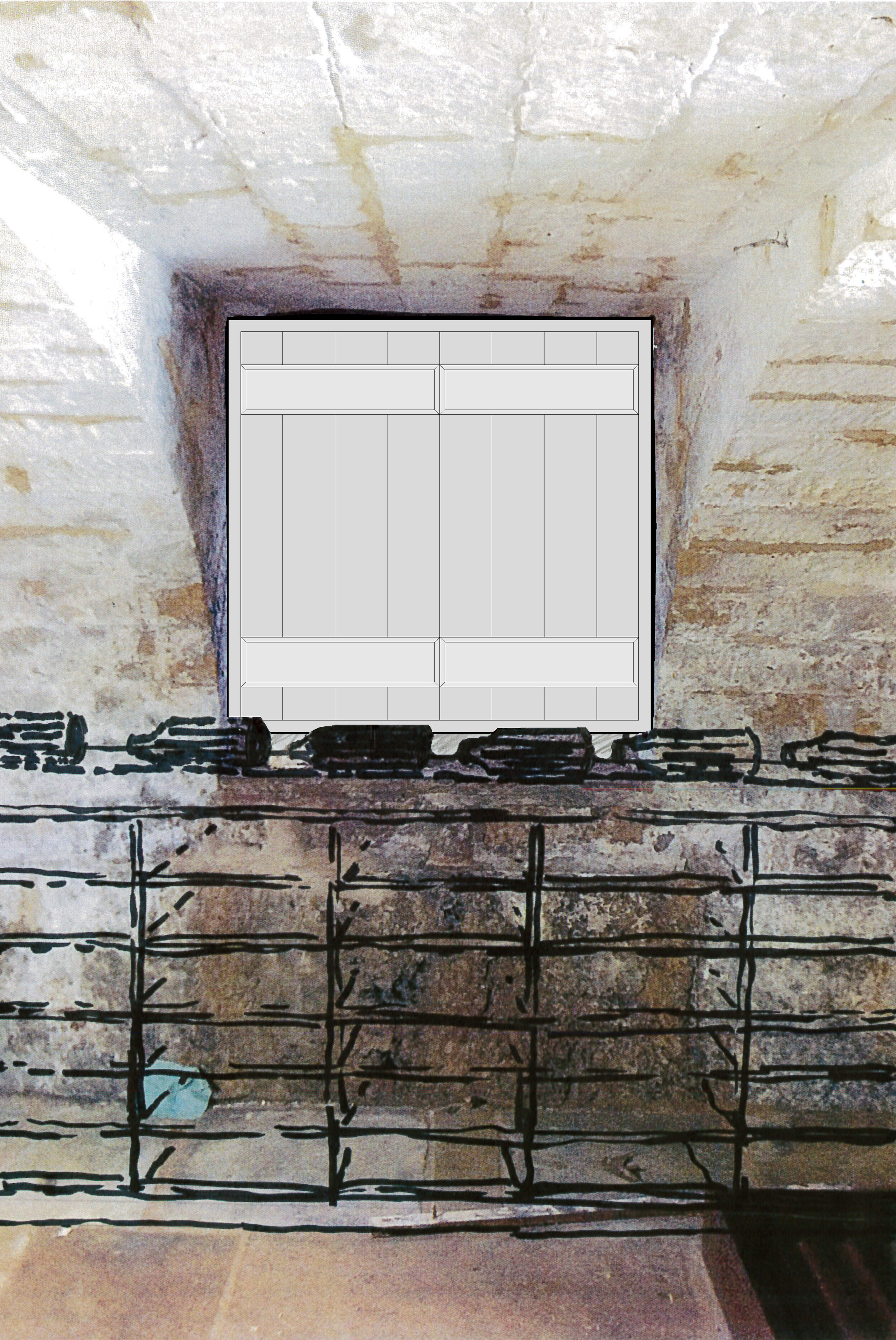
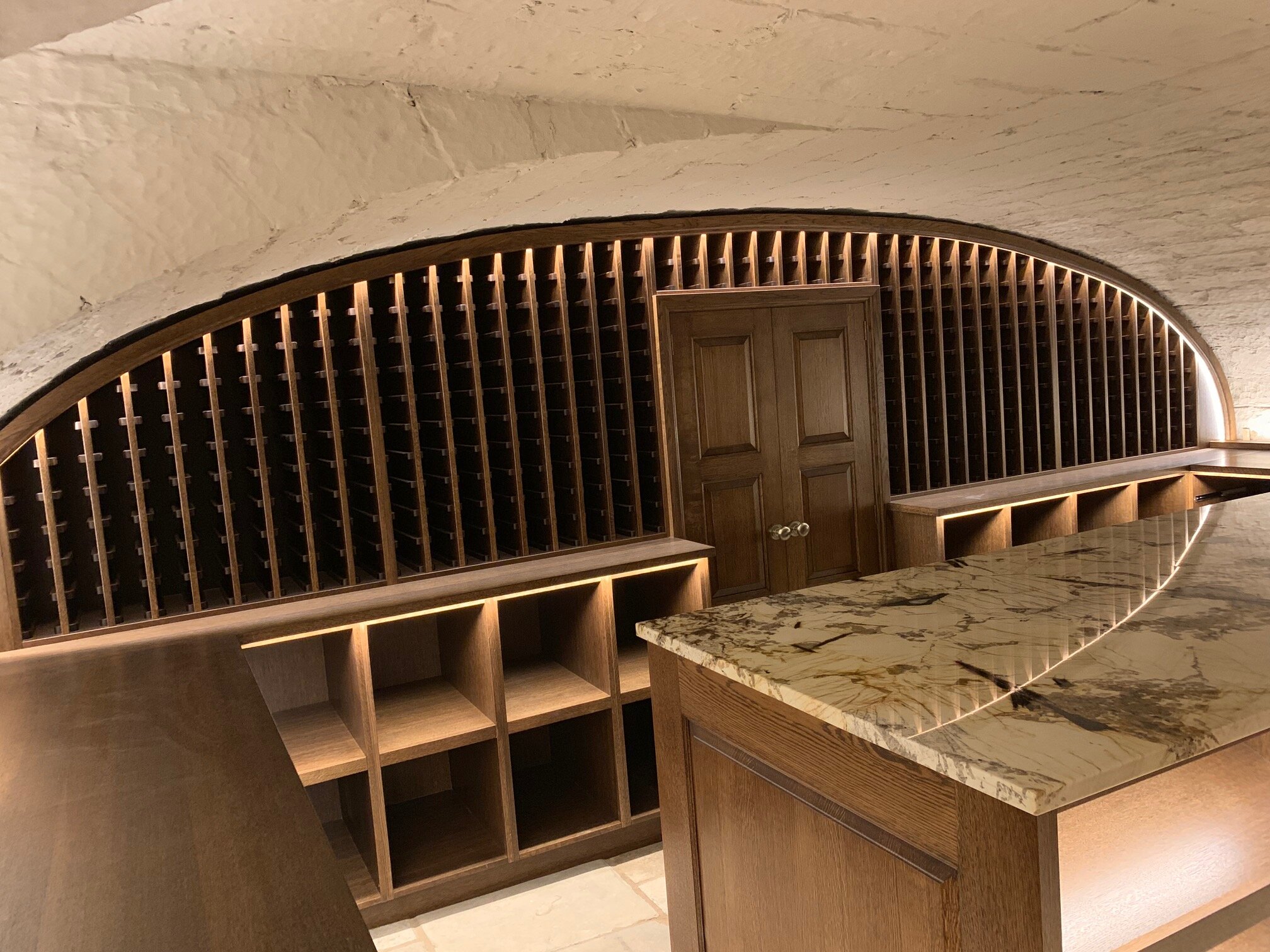

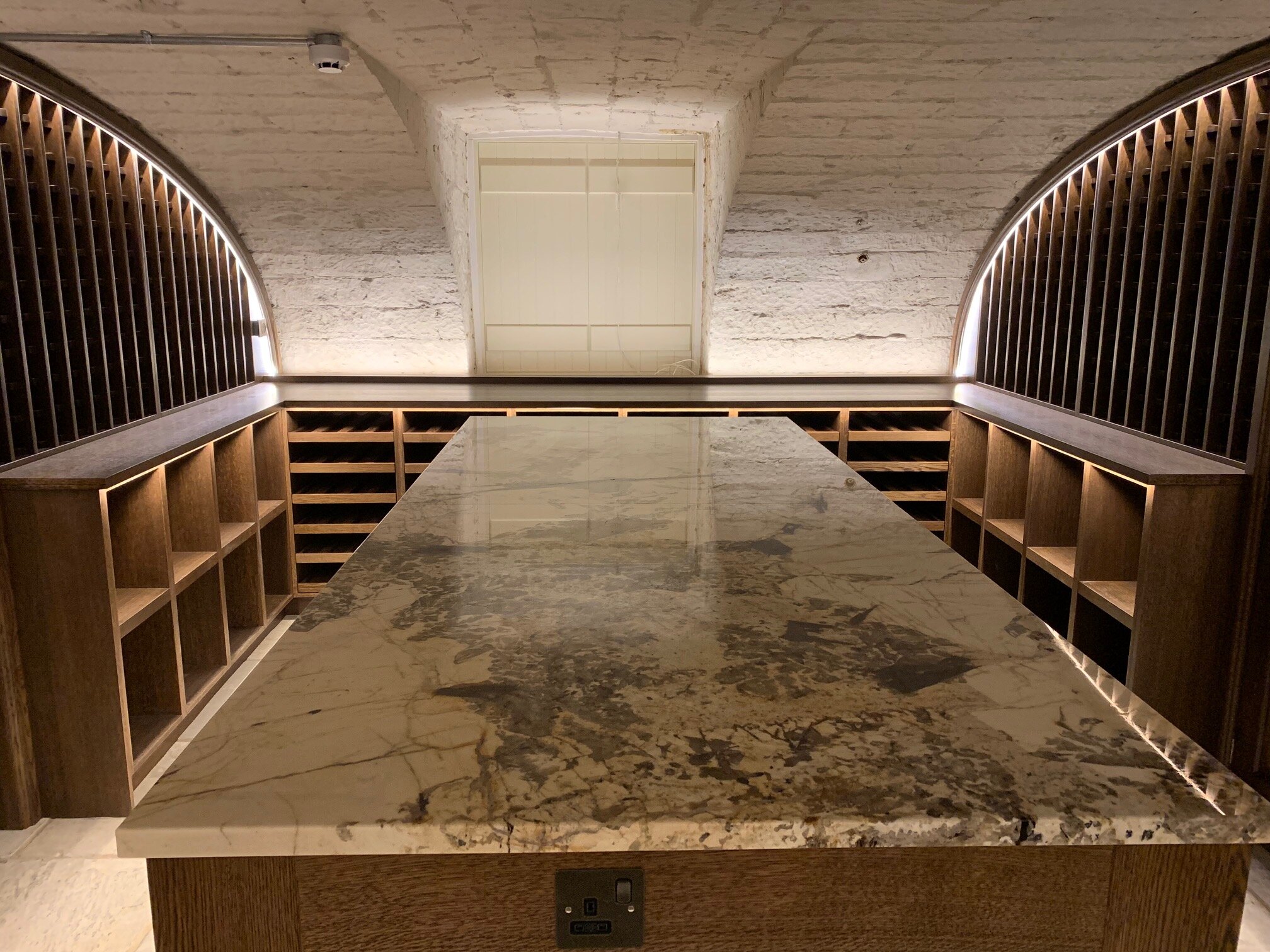
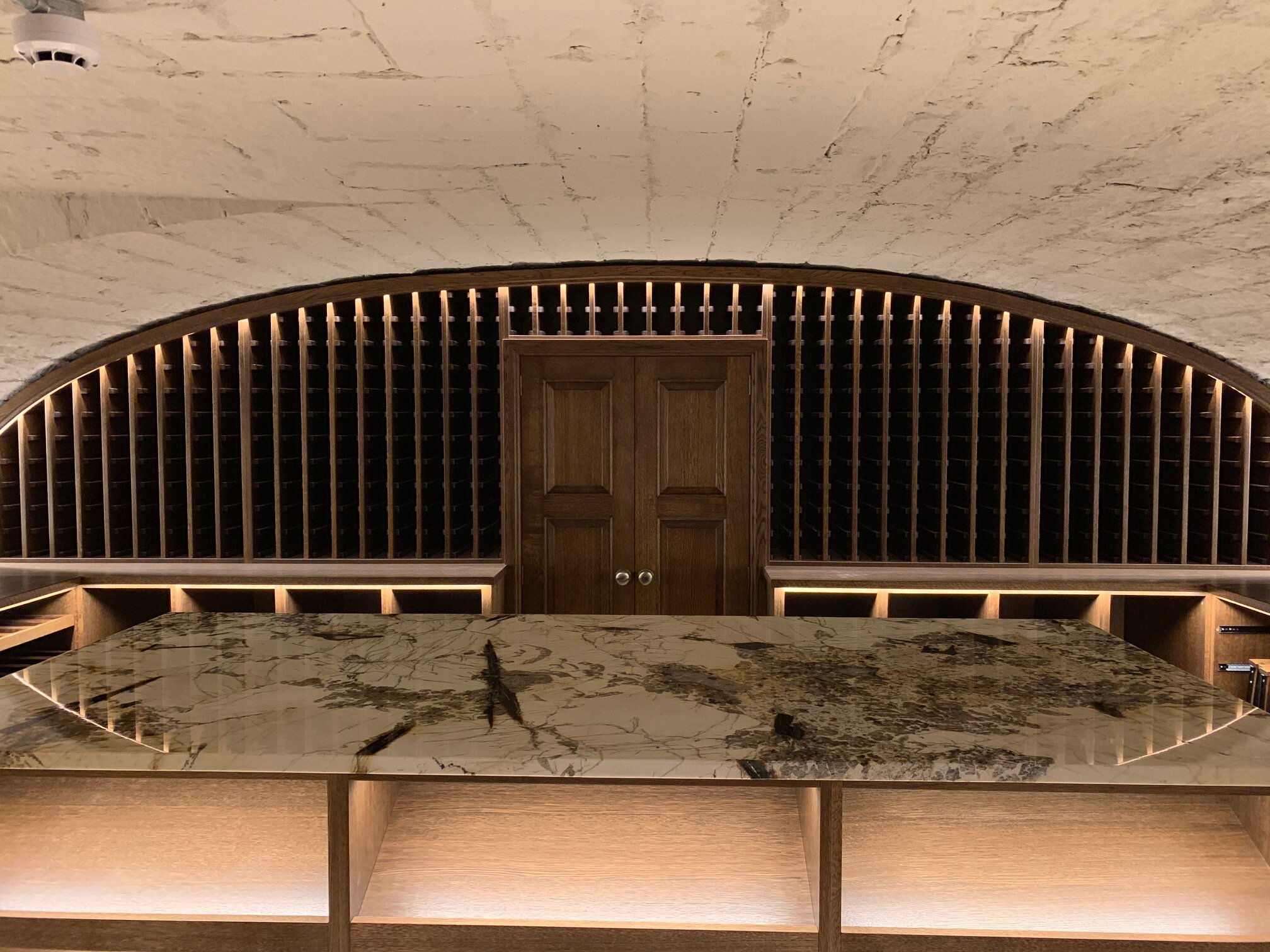

This project was located in a listed building with a dark, damp and rather ugly traditional cellar in the basement. Wine by Design worked closely with the client, main contractor, architects and designers to transform the space into a temperature and humidity controlled functioning wine cellar. The racking layout was designed to suite the clients wine collection, drinking habits and access requirements which enabled him to bing his wine home and enjoy it over the short and long term.
Not a single new oak barrel can be found in Sorrel's wine cellars, which are on the main street of Tain l'Hermitage in Northern Rhone. His one concession to modernism is his air-conditioned cellar. Production is small, with 1,000 cases of white and red Hermitage wines, and the rest Crozes-Hermitage.
Marc Sorrel took over the lion's share of the family wine business from his father in 1982. Somewhat thrown in at the deep end, his first efforts were less than spectacular. He bounced back, however, with his next vintage and has been on the up ever since and is now one of the finest producers of traditionally styled Hermitage.
His winemaking technique is distinctly non-interventionist - he rarely de-stems, he doesn't use new oak and his wines are often aged for up to two years before bottling. This traditional approach gives an old-fashioned style of Hermitage which is full, well-structured and very long-lived.
Yann Durieux is a young winemaker who is definitely making his mark in Burgundy! He has very strong views about how wine should be made and how vines should be tended. His domaine is called Recrue des Sens.
He has both bought and rented vineyards in some amazingly good terroir, particularly in the Hautes Cotes de Nuits, but as he becomes more established he is also paying attention to other prime areas such as Gevrey Chambertin.
Durieux holds 3 hectares of vineyards around Villers-La-Faye, comprising Pinot Noir, Aligoté, and Chardonnay. He also purchases a small amount of Pinot Noir, all of which is certified organic. Yann is no ordinary wine producer. He is first and foremost a man who looks after nature and searches for ways to develop viticulture in balance with the eco-system. His vision is simply to make beautiful wines, and in doing so he is happy to leave convention behind him. He works the vines to the highest standards of quality - no chemicals, ultra low yields, and an unerring respect for the natural process of wine-making.
In 1974, 100 years after the creation of Cristal, Jean-Claude Rouzaud decided to create the Cristal Rosé cuvée. To achieve this, he selected old-vine Pinot noir grapes from the finest Grand Cru vineyards at Aÿ, which are now cultivated according to biodynamic principles. The unique calcareous clay soil, which gives the grapes an exquisite minerality, enables the vines (in the best years) to attain exceptional fruit maturity, complemented by a crystalline acidity.
A UNIQUE BLEND
A blend of around 55% Pinot noir and 45% Chardonnay, comprising 20% of wine matured in oak tuns, Cristal Rosé is produced using the saignée (bleeding) process after cold maceration. The Cristal Rosé cuvée is aged, on average, for 6 years in Louis Roederer’s cellars
THE PRECISION OF CRISTAL AND INTENSITY OF ROSÉ
The attack reveals an aromatic intensity with a remarkable fullness and the smooth, sweet flavours of white flowers, red fruits, caramel, and Tarte Tatin. The full, round, and refined texture in the initial attack, which is characteristic of the Louis Roederer Champagne House, is complemented by a winey—though not full-bodied—structure and a remarkable freshness, giving an impression of great finesse and strengthening the wine’s precision.
In 1902 a Japanese anemone was designed on a Belle Epoque bottle – an icon which would soar to grandeur over the years.
In the early 1900s, the Art Nouveau movement burst into life, drawing its inspiration from the lines and movements of nature, inviting beauty and poetry into daily life. Its values echoed those of the House of Perrier-Jouët.
The artist and master glass maker Emile Gallé was one of the movement's pioneers.
It was in 1902 that he designed the iconic anemone wreathed in gold that would be placed on the bottle of the first Perrier-Jouët Belle Epoque vintage in 1964, turning it into a work of art. And thus was born the partnership between Art Nouveau and the House. A history which continues to unfurl to this day.
In a very short space of time Olivier Bernstein has established himself as a new star in Burgundy, receiving superb press notices from his very first vintage, 2007 from both Jancis Robinson and Allen Meadows among others.
The range focuses on six grands crus from the Côte de Nuits: a trio from Gevrey-Chambertin, specifically Charmes-Chambertin, Mazis-Chambertin and Chambertin Clos de Bèze; along with Clos de Vougeot, Bonnes Mares and Clos de la Roche. These are supported by three 1ers crus, three white wines and a single village cuvee from Gevrey-Chambertin. Naturally, production of each wine is tiny, considering the low yields coming from old vines.
Bernstein comes from a family of music publishers, but left a promising corporate career to study oenology in Beaune. After working harvest at Domaine Rouget, which enabled him to meet the late Henri Jayer, during the 2002 vintage, he moved to Roussillon to found his own Domaine, Mas de la Deveze. He returned in Burgundy in 2007 to establish a négociant business.
Since then, Olivier has managed to get close to his vineyard sources. He now manages the vineyard work for all but one of his sources and – a wonderful opportunity – has managed to buy two of the vineyards he has worked with since the start: Gevrey-Chambertin Les Champeaux and Mazis Chambertin. It is rare for grand cru vineyards to change hands so this is a major coup.
These vineyards follow the common thread of old vines – more than 80 years old in the case of the Mazis – which enables Olivier to work with excellent raw material. During vinification the wines are very lightly handled, with a good proportion of stems included to maintain a lively thread throughout, while the barrels are made to order by master cooper Stéphane Chassin, who comes to taste the new vintage before deciding what type of toasting will suit each individual wine. The 1er and grand cru wines are matured in new wood from the start. This takes place in the new Bernstein headquarters, some marvellous reconditioned old cellars in the heart of Beaune.
Jasper Morris MW, Burgundy Wine Director and author of the award-winning Inside Burgundy comprehensive handbook
In the formative years, Winemaking Partner Zelma Long noticed that the Vilafonte vineyard were producing two distinctive styles. Both styles were of the highest quality, not one of them better than the other, but distinctive nonetheless. One portion of the vineyard produced a soft, rounded, fleshy and fruit driven style. The other side of our vineyard produced a bolder, more powerful and structured style. It was this realisation that lead to the emergence of Series M and Series C.
Series C takes its name from the Cabernet Sauvignon and Cabernet Franc which predominantly defines the style of this wine. The Series C style is that of a firm, powerful and concentrated wine, rich in fruit at release and blended for long aging. The Cabernet comes from our most potent blocks of Cabernet Sauvignon, the Cabernet Franc displays hints of violet flowers and elegance while the Merlot component gives it a velvety texture.
Note from Neal Martin on the Series C 2014 - 94 points
The 2014 Series C is a blend of 65% Cabernet Sauvignon, 19% Merlot, 10% Malbec and 6% Cabernet Franc, matured in 70% new French oak for 22 months. Deep in color, in my opinion it has a superior bouquet compared to the Series M this vintage: very well defined with gorgeous black cherry and blueberry fruit, the oak seamlessly integrated even though it will need 3-4 years to fully integrate. The palate is medium-bodied, smooth and velvety in texture with finely tuned acidity, nicely poised and gently fanning out with a fresh blackberry and bilberry finish, white pepper and clove lingering on the aftertaste. This is one of the most refined vintages of Series C that I have tasted.
The sleek-looking ‘eto’ decanter both decants and works as a wine preserver, according to its inventors, who claimed the device can keep open wine fresh for 12 days.
The word eto means ‘again’ in Welsh – a nod to designer Tom Cotton’s Welsh heritage.
The Kickstarter campaign launched at midday Tuesday 6 June and had already reached the target of £55,000 by the morning of Thursday 8 June.
‘We’ve been really pleased by the fantastic response, reaching our target in less than 32 hours has been incredible, and we’re really excited about getting the first etos out to our backers.’
The campaign is at £450,000 at the time of publishing on the 29 June, and does not close until 6 July.
It is expected that eto will retail at £79, but those pledging on Kickstarter can get it for £59.
How it works
The patented design creates an air-tight seal between the wine and the air by pushing down the neck, which then locks when it reaches the wine, according to eto’s designers.
This prevents oxygen interacting with the wine and influencing the flavours.
The Blanc de Blancs is a speciality of the house, made from 100% Chardonnay sourced from Grand Cru vineyards, solely in the Côte des Blancs. The Blanc de Blancs, as with all the other Pol Roger wines, undergoes the traditional hand remuage (the turning of the bottles).
Champagne Pol Roger was established by Pol Roger back in 1849, and continues to be managed by his family members, who have maintained standards set by him of excellence and consistency whilst continuing to broaden the range of styles on offer. Their champagnes are noted for long cellar ageing before they are released, along with their fine, persistent mousse, which have always found favour with connoisseurs in the UK.
Experts with the Chardonnay grape, Pol Roger handle it beautifully here. This Champagne spent a long time on its lees, creating a superb richness and intensity, that is balanced out by flinty, chalky qualities and a remarkable freshness for its age.
“We hear from people all the time who are surprised to learn that Monte Bello is not from Napa Valley,” Mr. Draper said during a recent visit to Ridge’s hilltop winery near Cupertino.
Today, the cabernet sauvignon produced in the region is among America’s best, particularly for fans of classically structured, savory wines, and is certainly among the best cabernet values. Yet only small amounts are produced, and that amount is unlikely to grow anytime soon.
The appellation is the rare wine region defined by elevation. In the hills south of San Francisco, including land in three counties from Woodside and Menlo Park on the north to Santa Cruz and Watsonville on the south, the vineyards must largely be above the fog line, from about 800 to 2,700 feet. The region also encompasses the boundary between the Pacific and North American tectonic plates. The San Andreas Fault passes through.
Paul Draper, Ridge's CEO and head winemaker, visits the UK, Ridge's most important export market, at least once a year, but also travels widely in the rest of Europe. What may help Ridge wines' appeal to the British, apart from the relatively moderate pricing, is Ridge's steadfast adherence to traditional winemaking techniques and a style that is unashamedly modelled on that of the Bordeaux first growths, with the twist that Draper and team favour well-seasoned American oak above barrels imported from France.
More than three hours after it was opened and decanted, this imperious 32 year old Pomerol had only gained in complexity and depth on the nose and palate. Initially a little shy and closed, this bottle simply began to blossom and flourish as floral violet notes vied for attention with cedary cassis, cherry, ink, musk, truffle, leather and a leafy undergrowth note. Beguilingly supple, tense, fresh and vital, this sublimely mature and supremely elegant wine in double magnum form should last for another 15-20 years. Pure pleasure.
The Cos d’Estournel 1989 has a dense, broody bouquet with typical Saint Estephe earthiness complemented by hints of seaweed and a touch of ox blood. The palate is medium-bodied with firm but rounded tannins, very good weight and concentration here, fine acidity and harmony with a nice build so that its finishes with a peacocks tails of mulberry, cedar and leather. This is maturing beautifully, lovely talcum finish. Drink now-2025. Tasted June 2010. 95 NM
“Made by Dermot Sugrue, former winemaker at Nyetimber, comes this incredible, highly complex wine. With a tiny production and handmade feel throughout, this is a spellbinding wine and one which will woo everyone who tastes it.” Matthew Jukes
“Full, with a delicious, opulent, creamy texture. The mouthwatering, sweet apple fruit on the palate is supported by a savoury, spicy note and a refreshing acidity. A great wine with a real purity of flavour and great, pithy mouthfeel. 96 Points.” Richard Hemming MW
Grape Variety :
Pinot Noir.
Vineyard
Site: at the southern end of the Beaune appellation, next to Pommard. The Drouhin vineyard is at mid-slope, on a mild incline with an east/south-east exposure. It is the largest parcel of the Clos des Mouches (14 hectares - 35 acres), one half planted with chardonnay, the other half with pinot noir.
History & tradition: the name "mouches" means flies. There were once bee-hives in this sun-drenched "clos" (vineyard enclosure); the bees in the local dialect were called "mouches à miel" (honey flies), hence the name Clos des Mouches. It is one of the first vineyards acquired by Maurice Drouhin (the founder's son) in the 1920's. With great determination, he bought 41 different parcels from 8 proprietors. It is planted equally in red and white grapes and both wines have achieved mythical status for the House of Joseph Drouhin.
Soil: clay and limestone. Rocky soil in the upper part of the vineyard. At the center, the soil is limestone and marl. This light composition is responsible for the great finesse of the wine.
Domaine area: 6.75 ha. (16.875 acres).
Average age of the vines: 39 years.
Viticulture
Biological cultivation since 1990; biodynamic cultivation a few years later.
Vine stocks: "sélection massale" (propagation of new vine stocks from a number of selected vines) done at the Drouhin nursery; also clones of recognized quality.
Soil maintenance: compost of manure and white wood, sometimes guano (seabird manure used as fertilizer). Soil is ploughed either by tractor or by horse to manage spreading of weeds
Treatment: only authorized products for biological cultivation are used: infusions and macerations of plant materials, sulfur and copper, powdered rock. Natural predators are not eliminated.
Plantation density: from 10,000 to 12,500 stocks/ha in order to extract all possible nuances from the terroir and limit the production of each vine stock.
Pruning: Guyot.
Yield: we aim to keep our yields low, more in line with the previous regulation, around 20% less than allowed by the current law.
Tasting note by Véronique Boss-Drouhin
"An exceptional wine. Beautiful, deep-red ruby colour, with the bright sheen of great Burgundies. Intense and fresh nose for the young wines. Primary notes of red fruit dominate, such as Morello cherry ("griotte", or wild cherry), raspberry, blackberry. There are hints of complexity with smoky flavours evolving towards liquorice. When the wine is maturing, aromas of pepper, tobacco, humus and undergrowth appear. When drinking the wine, the first impression is always clear-cut and the texture fleshy. The body is firm without being rough, well meshed without being heavy. There is great freshness in the younger wines. With age, the wine gets rounder. It takes on "gras" (velvety texture) and a more precise architecture, supported by silky tannins. It is lively and refined at the same time. There remains a final and most pleasing sensation of harmony, fullness and delicate tannins, as the wine lingers on the palate".
Wine by Design provided optimal conditioning and racking for 35,000 bottles in the Pall Mall Wine cellars, we also designed and built the wine library and wine wall in the members lounge. The wine storage in the members lounge is unique as it keeps all the wine (Red, White & Champagne) at serving temperature.

















